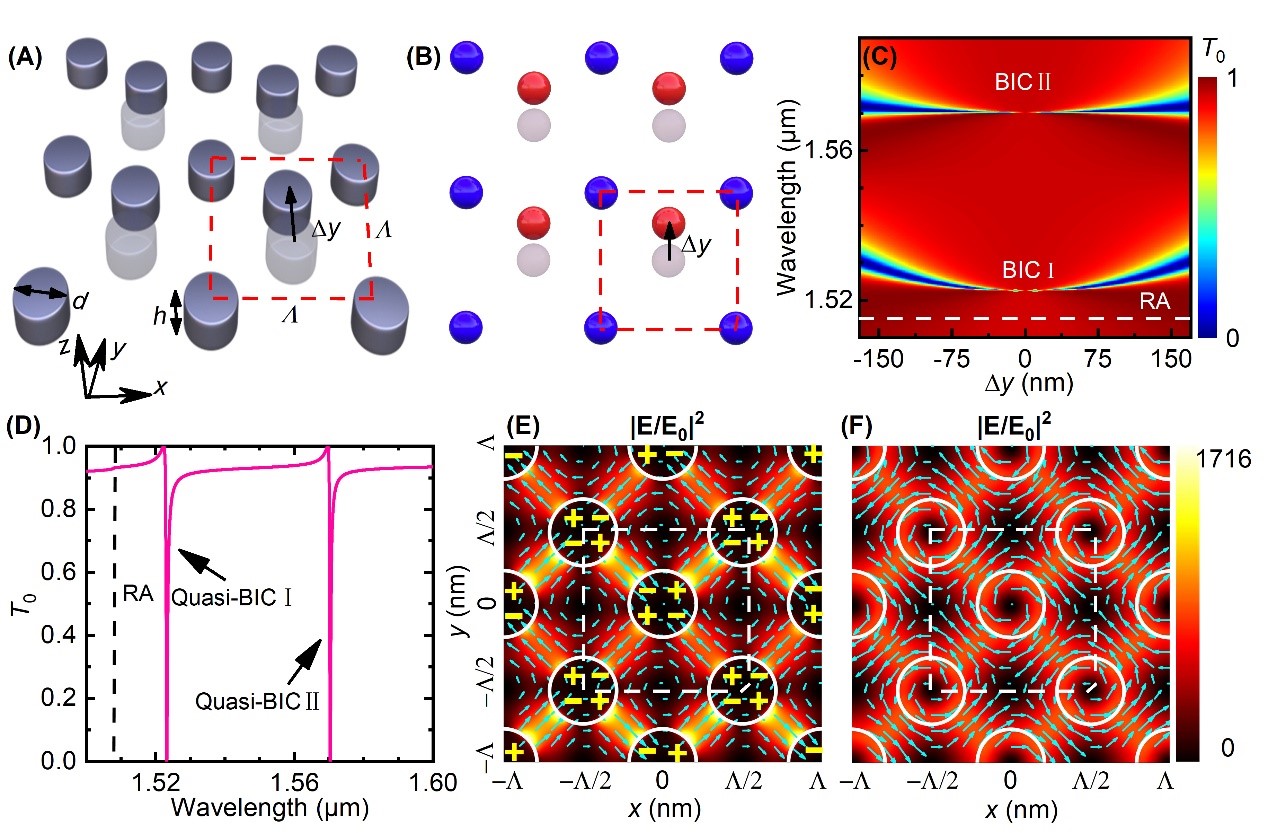Hybridization of Surface Lattice Resonances Induces Dual-Band Bound States in the Continuum
Date:14-11-2022 | 【Print】 【close】
High quality factors (Q-factors) are favorable in a diverse range of applications, ranging from photoluminance, lasers, nonlinear optics, strong coupling, and optical sensing. In metasurfaces, surface lattice resonances (SLRs) and bound state in the continuum (BIC) are two convenient approaches for achieving high Q-factors.
A research group led by Dr. LI Guangyuan from the Shenzhen Institute of Advanced Technology (SIAT) of the Chinese Academy of Sciences experimentally demonstrated that, hybridization of SLRs can result in dual-band BICs in silicon metasurfaces. The measured Q-factors can reach as high as 1240. They also showed that the resonance wavelengths and Q-factors of the dual-band quasi-BICs can be conveniently tuned by varying the nanoparticle size or the lattice period. This study was published in Nanophotonics.
To date, most symmetry-protected BICs in periodic nanostructures rely on the structural symmetry breaking of the unit-cell nanoparticles. Reported approaches include asymmetrically-shaped nanoparticles, and bipartite nanoparticles with different sizes. In order to achieve high Q-factors for quasi-BICs, the structural asymmetry parameter should be tiny enough, posing challenges on the nanofabrication.
"Less than 10% size difference is very challenging, especially when the nanoparticle diameter is only a few hundred of nanometers," Dr. LI explained, "however, the relative positions of nanoparticles can be very accurately controlled in the top-down nanofabrication. This motivated us to propose periodic bipartite nanoparticles with the central one slightly shifted from the center of the unit cell."
"To our surprise, the electric dipole SLRs (ED-SLRs) supported by two individual silicon lattices are totally cancelled with each other in the bipartite arrays. This phenomenon is distinct from the plasmonic counterparts." Dr. LI said, "Instead, we observed dual-band BICs due to the hybridizations of two in-plane electric quadrupole SLRs (EQ-SLRs) and of two out-of-plane magnetic dipole SLRs (MD-SLRs) that are supported by the two individual silicon lattices."
In their study, Dr. LI and his colleagues also discussed the tunability and the potential applications. They demonstrated that the tunability of SLRs by varying the silicon nanodisks' diameter and the lattice period, is inherited by the dual-band BICs. They also numerically showed that bulk sensitivities above 480 nm/RIU and high figures of merit up to 1200 can be obtained with these dual-band quasi-BICs.
The researchers expected that this concept will help to suppress the inherent losses and to achieve high Q-factors for plasmonic metasurfaces, on which they finished the experimental demonstration recently, and the obtained dual-band BICs will find promising applications in nonlinear frequency conversion, multimodal lasing, optical sensing, and multiplexed optical nanodevices.

When two periodic silicon nanoparticle arrays are hybridized in such a way that the central nanoparticle is shifted from the center of the unit cell, dual-band BICs are generated by the hybridizations of two EQ-SLRs and of two MD-SLRs. (Image by SIAT)
Media Contact:
ZHANG Xiaomin
Email:xm.zhang@siat.ac.cn